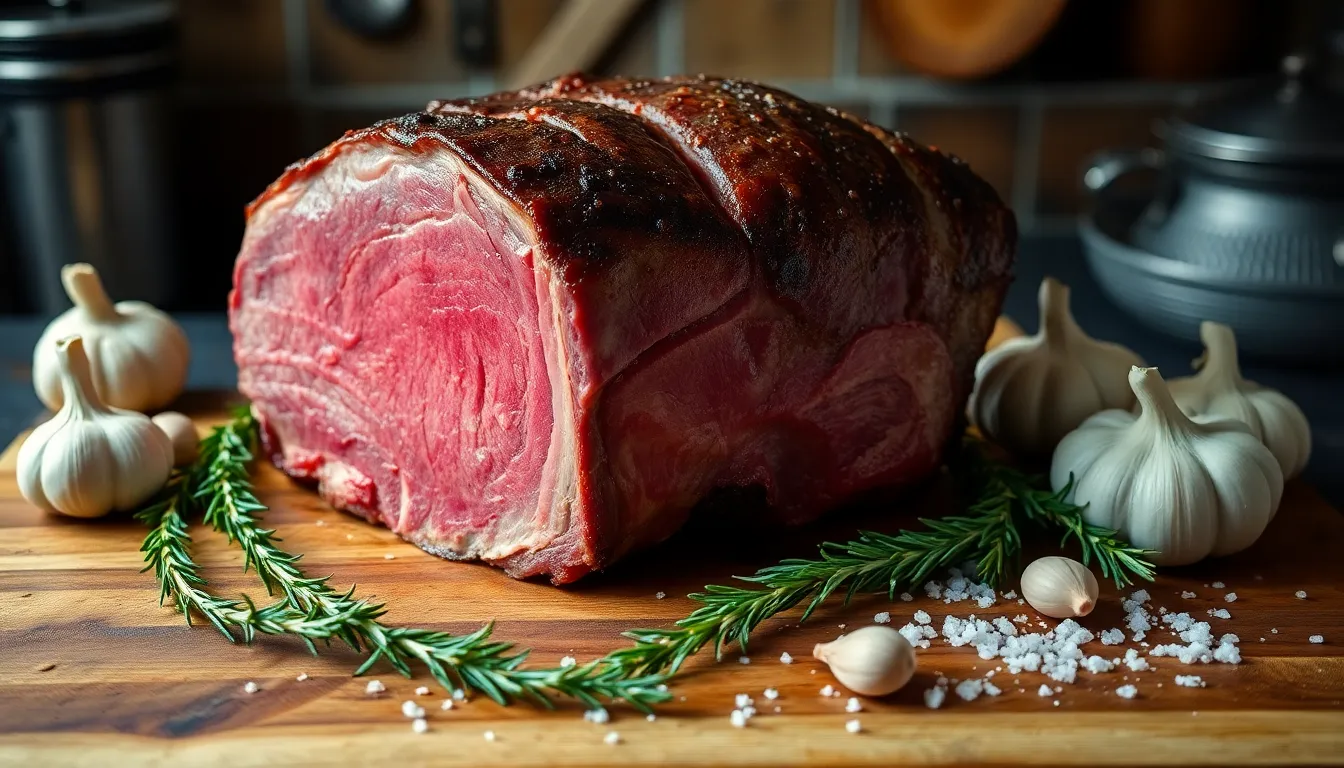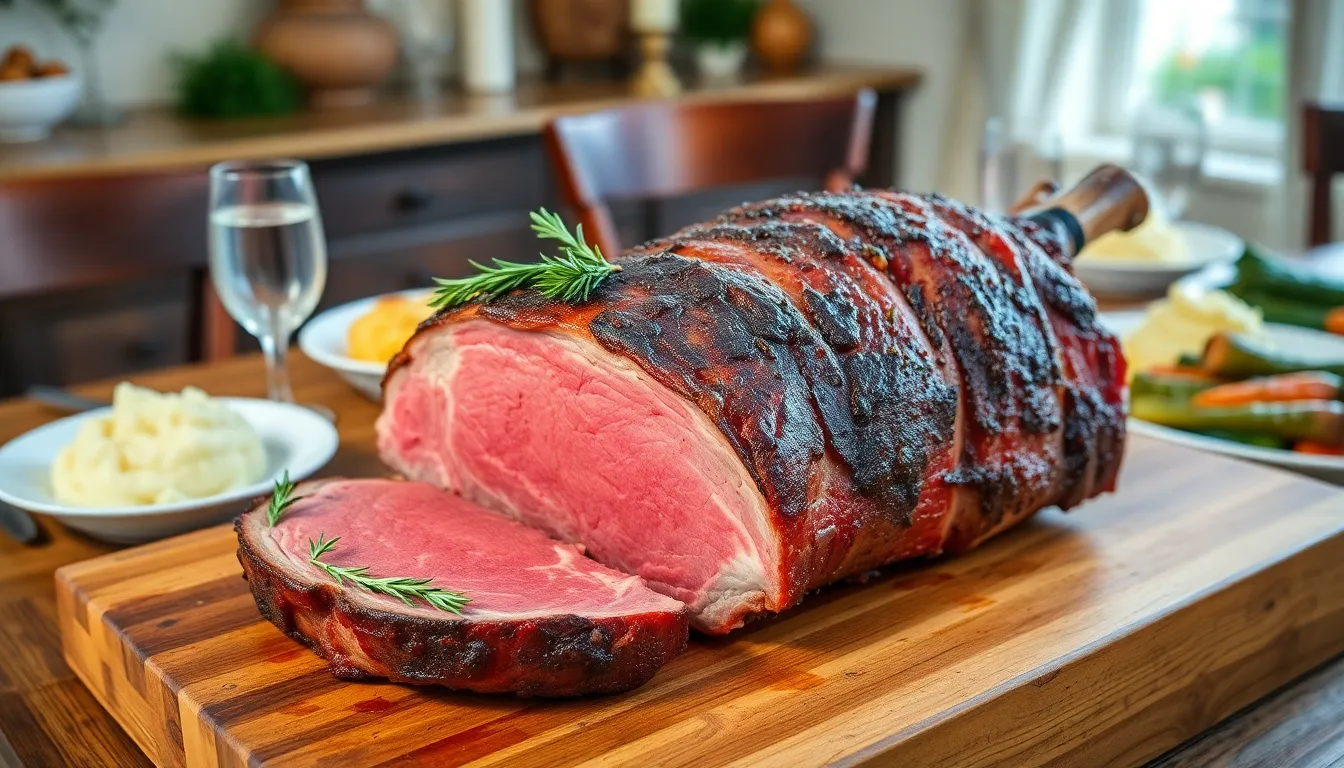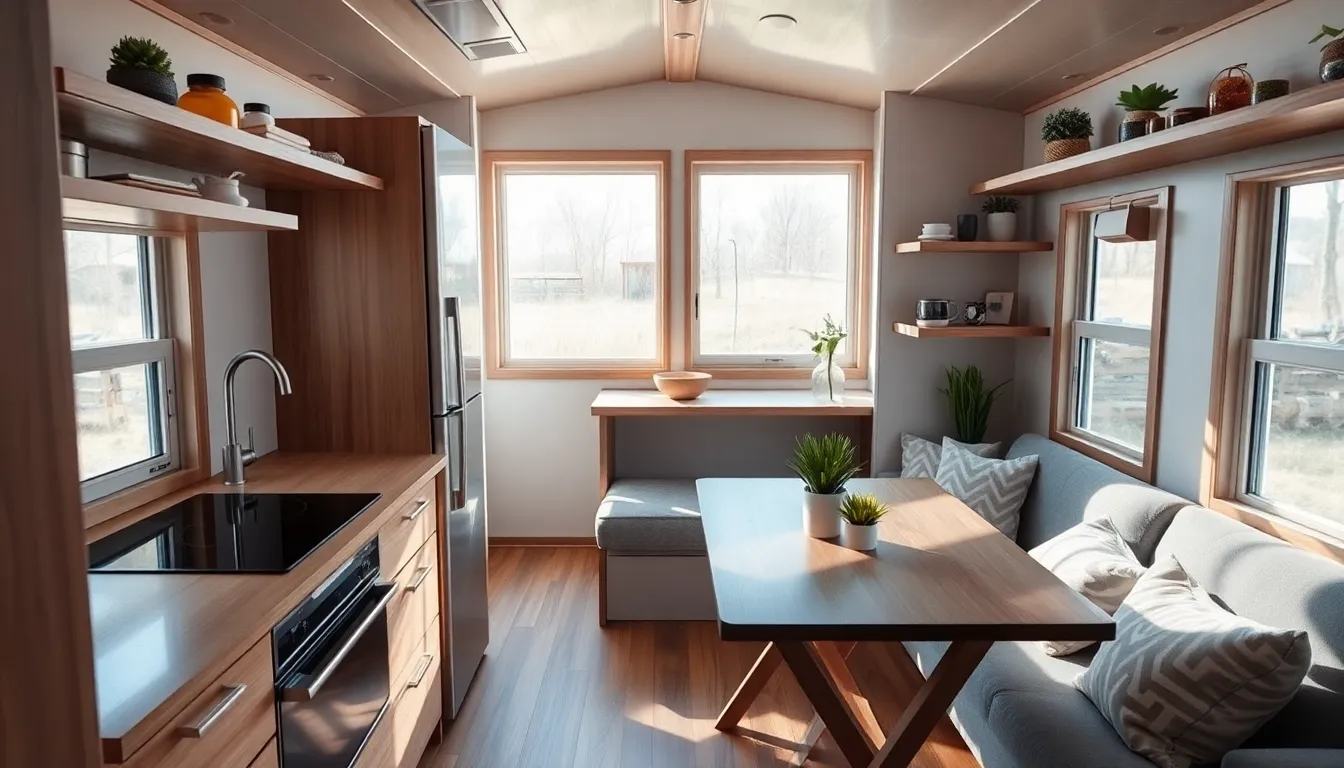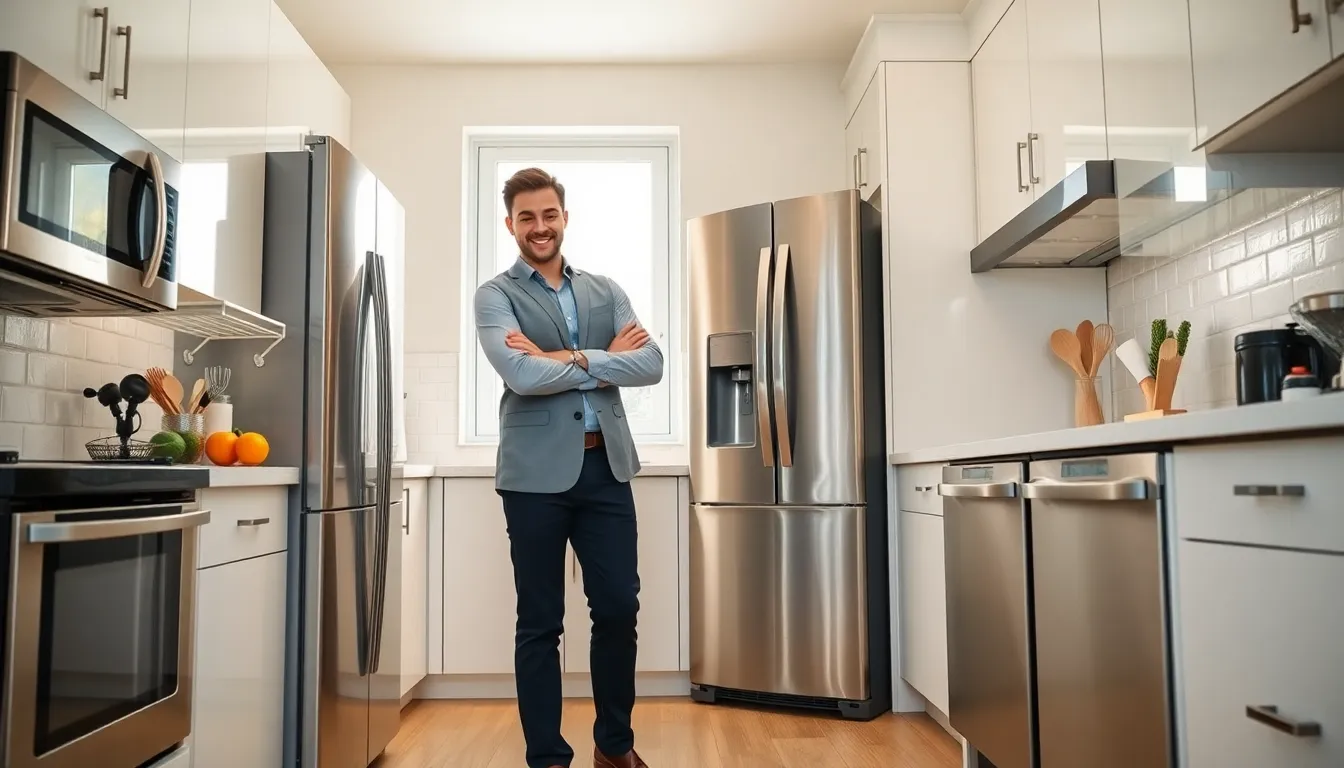Imagine the tantalizing aroma of a perfectly cooked prime rib roast wafting through your home, making every mouth water in anticipation. This isn’t just any roast; it’s the star of the dinner table, the culinary equivalent of a standing ovation. With the right recipe, cooking a prime rib in the oven becomes a delightful experience rather than a daunting task.
Table of Contents
ToggleOverview Of Prime Rib Roast
Prime rib roast stands out as a flavorful cut of beef, celebrated for its tenderness and marbling. This succulent dish, often referred to as the king of roasts, serves as an ideal centerpiece for gatherings. Cooked properly, prime rib yields a juicy, melt-in-the-mouth experience that satisfies various palates.
Aged beef enhances the flavor profile of prime rib. Many chefs recommend selecting a prime cut, as it offers superior marbling and tenderness compared to other grades. Various cooking methods exist, though oven roasting remains popular for its ability to create a beautifully browned crust while preserving juiciness.
Seasoning plays an essential role in preparing prime rib. A simple blend of salt, pepper, and herbs elevates the natural flavors without overpowering them. Many cooks apply a rub several hours before cooking, allowing the flavors to penetrate and enhance the meat.
Resting the roast is vital after cooking. Allowing it to rest for 20 to 30 minutes ensures that juices redistribute, resulting in a more flavorful and moist slice. Slicing against the grain maximizes tenderness, providing an enjoyable dining experience with each bite.
Cooking times vary based on the roast size and desired doneness. A meat thermometer assists in achieving the perfect temperature, with medium-rare targeting around 130°F to 135°F. The combination of proper technique and quality ingredients culminates in a prime rib roast that impresses and delights.
Ingredients For The Perfect Prime Rib Roast

The right ingredients make a prime rib roast outstanding. Selecting quality components ensures a delicious result worth sharing.
Selecting The Right Cut
Choosing the right cut significantly influences flavor and tenderness. Prime rib stands out as the top choice due to its marbling and rich taste. This cut often comes from the rib section, which imparts exceptional juiciness. A bone-in option enhances flavor further, though boneless versions offer ease of carving. Aim for a roast with a good fat cap, as it bastes the meat during cooking. Target an 8 to 10-pound roast for a gathering, ensuring ample portions for guests. Sourcing grass-fed or dry-aged beef can elevate the flavor profile even more.
Essential Seasonings
Seasoning plays a crucial role in enhancing the roast’s natural flavors. A simple mix of kosher salt and freshly ground black pepper creates a flavorful base. Consider incorporating garlic cloves and fresh rosemary for a fragrant touch. Using thyme complements the beef beautifully, adding depth to each bite. Rub the seasoning generously over the entire surface to ensure even flavor distribution. For added richness, a compound butter with herbs can be applied before roasting. Adding a splash of Worcestershire sauce can elevate flavors dramatically, providing that umami kick.
Preparing The Prime Rib Roast
Preparing prime rib roast requires attention to detail and the right techniques. A well-executed preparation sets the stage for a tender, flavorful dish.
Step-by-Step Preparation
Start by selecting a high-quality 8 to 10-pound prime rib roast. Trim excess fat, leaving a quarter-inch layer for flavor. Rub kosher salt and black pepper generously over the meat, ensuring even coverage. Add minced garlic and finely chopped fresh herbs, such as rosemary and thyme, to enhance flavor. Let the seasoned roast rest at room temperature for two hours; this aids in even cooking. Securely tie the roast at intervals with butcher twine to maintain shape during cooking. Preheat the oven to the desired temperature for roasting. Achieving the perfect doneness depends on careful attention to time and temperature.
Setting Up The Oven
First, ensure the oven is free from any debris or lingering odors. Preheating to 450°F effectively creates a crust that seals in juices. Place an oven-safe roasting pan on the center rack; using a pan that fits the roast without overcrowding is crucial. Insert a meat thermometer in the thickest part of the roast, avoiding the bone for accurate readings. Adjust the rack position if necessary, aiming for optimal heat distribution. For preferred doneness, plan to lower the temperature to 325°F after an initial 30 minutes, which allows slower cooking for tenderness. Monitor the roast closely, especially as it nears the target internal temperature.
Cooking The Prime Rib Roast
Cooking a prime rib roast requires precision and attention. Following specific guidelines ensures a delicious outcome.
Recommended Cooking Times
Cooking times for a prime rib roast depend on its weight and desired doneness. Typically, roasts weighing 8 to 10 pounds require approximately 2 to 3 hours of cooking. Initial roasting at 450°F for 30 minutes creates a flavorful crust. Afterward, reducing the temperature to 325°F allows for even cooking. As a rule of thumb, estimate 15 to 20 minutes per pound for medium-rare. For rare, consider the lower end of that estimate. Cooking beyond the recommended time risks reducing tenderness and moisture.
Internal Temperature Guide
Monitoring internal temperature is essential for perfect doneness. A meat thermometer provides an accurate reading during the cooking process. Target an internal temperature of 125°F for rare, 135°F for medium-rare, and 145°F for medium. Temperatures above 145°F result in medium-well doneness, while well-done begins at 160°F. After removing from the oven, resting the roast for 20 to 30 minutes allows residual heat to complete the cooking process. Rechecking the temperature ensures that the roast meets the preferred doneness level.
Serving Suggestions
Prime rib roast is often the star of the meal, and thoughtful serving suggestions enhance its appeal. Pairing this roast with the right accompaniments elevates the dining experience.
Side Dishes That Pair Well
Roasted vegetables, such as carrots, Brussels sprouts, and potatoes, complement the rich flavors of prime rib. Creamy mashed potatoes provide a comforting texture and absorb flavorful juices. Besides that, a fresh green salad with vinaigrette adds brightness to the plate. Consider serving Yorkshire pudding as a traditional British side that enhances the dish’s quality. Garlic bread offers a crunchy contrast and pairs well with meat juices.
Perfect Sauces And Gravies
Adding sauce options brings additional depth to the roast. A classic horseradish sauce offers a spicy kick, balancing the meat’s richness. Alternatively, a creamy mushroom sauce enhances the savory elements of the dish. Consider red wine gravy, made from drippings, for a luxurious touch that integrates flavors. Mustard sauce infuses tanginess, pleasantly cutting through the meat’s richness. These sauces enhance the prime rib, creating a memorable meal.
Crafting a prime rib roast in the oven is an experience that brings joy and satisfaction. With attention to detail and quality ingredients, anyone can achieve a stunning centerpiece that wows guests. The combination of a perfectly seasoned crust and juicy interior creates a dish that’s hard to resist.
Resting the roast is essential for maximizing flavor and tenderness, ensuring each slice is a delight. Pairing it with complementary sides and sauces elevates the meal, making it memorable. Whether for a special occasion or a casual gathering, a well-prepared prime rib roast is a dish that will impress and satisfy every time.



